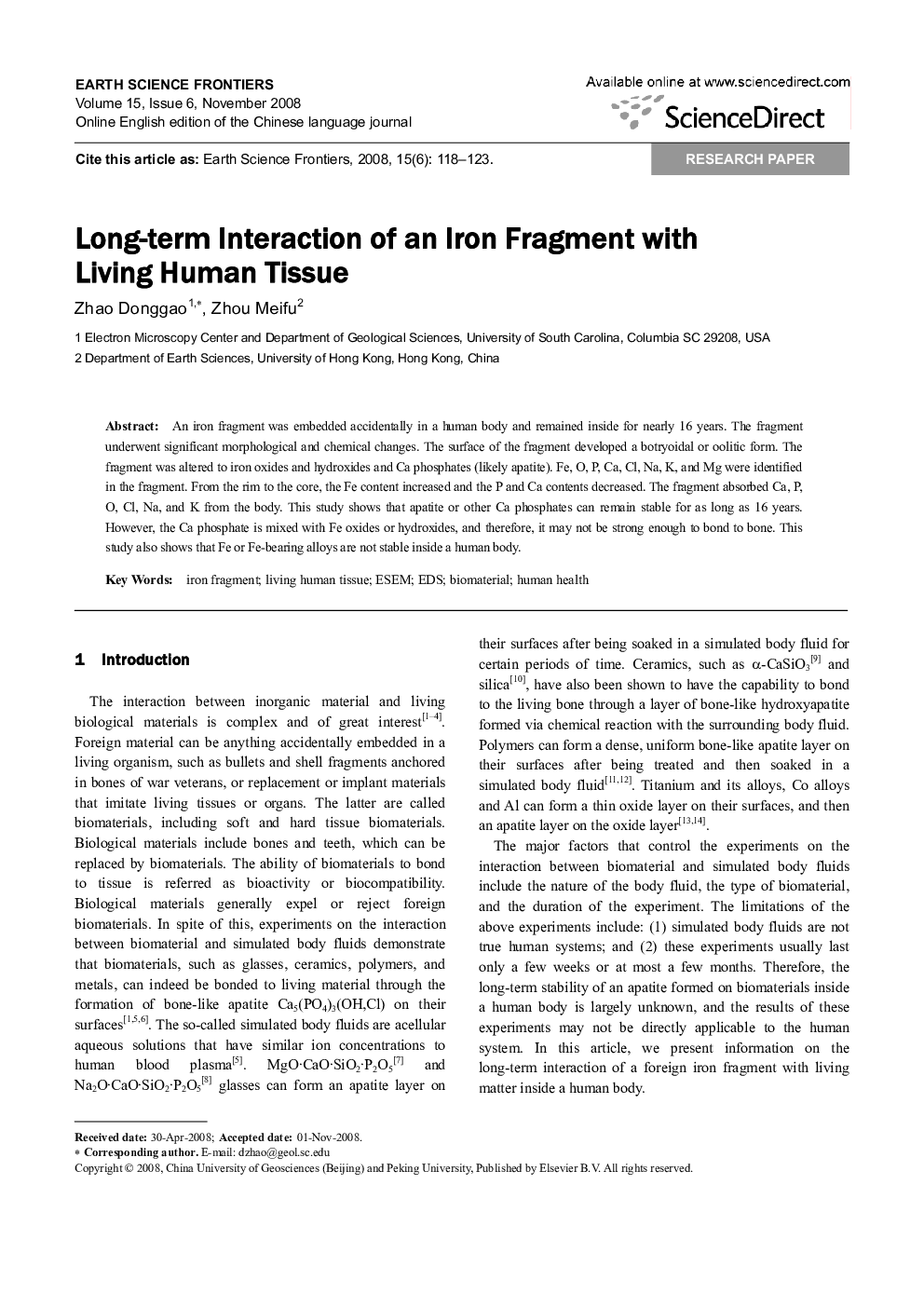| Article ID | Journal | Published Year | Pages | File Type |
|---|---|---|---|---|
| 4701536 | Earth Science Frontiers | 2008 | 6 Pages |
An iron fragment was embedded accidentally in a human body and remained inside for nearly 16 years. The fragment underwent significant morphological and chemical changes. The surface of the fragment developed a botryoidal or oolitic form. The fragment was altered to iron oxides and hydroxides and Ca phosphates (likely apatite). Fe, O, P, Ca, Cl, Na, K, and Mg were identified in the fragment. From the rim to the core, the Fe content increased and the P and Ca contents decreased. The fragment absorbed Ca, P, O, Cl, Na, and K from the body. This study shows that apatite or other Ca phosphates can remain stable for as long as 16 years. However, the Ca phosphate is mixed with Fe oxides or hydroxides, and therefore, it may not be strong enough to bond to bone. This study also shows that Fe or Fe-bearing alloys are not stable inside a human body.
